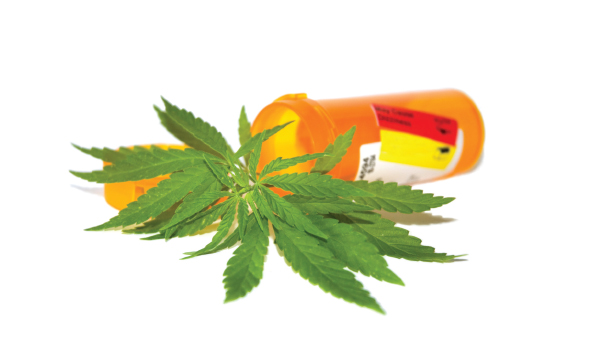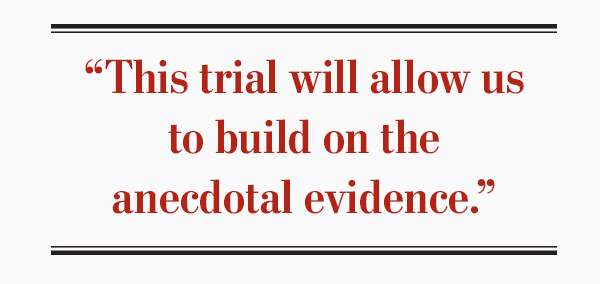
More and more veterans with PTSD are seeking relief through medical marijuana. Veterans report it reduces sleeplessness, alleviates pain, diminishes intrusive memories and flashbacks, curtails anxiety and improves sex drive and appetite.
Because it was illegal for so long, medical marijuana research is relatively sparse, even though its medical use dates back millennia. And research into veterans’ use of marijuana is even more rare.
Advocates point out that veterans with PTSD symptoms who switch to medical marijuana usually do so when the prescribed psychoactive drugs they are on prove to be ineffective or are causing side effects. Some veterans advocates worry about health risks and addiction; others claim it masks symptoms rather than treating the disorder. Some critics have difficulty separating potheads seeking a recreational high from people prescribed medical marijuana to control medically documented symptoms.
Many doctors are reluctant to prescribe it due to lack of peer-reviewed research demonstrating effectiveness, identifying side effects and interactions, and assigning appropriate dosages, according to a Canadian Medical Association spokesperson.
“Any treatment can have side effects, and medical marijuana should be considered with the same care and prudence that we give other treatments. This cannot happen without adequate research and evidence,” said Veterans Ombudsman Guy Parent, adding that more research would also reduce the stigma for veterans using medical marijuana.
Two groundbreaking studies are about to add to the knowledge base of veterans’ use as a therapy for PTSD.
A two-phase, placebo-controlled study involving five U.S. universities and research institutions will assess four strains of marijuana in managing veterans’ symptoms. One aim is to determine if it alleviates or masks PTSD symptoms. A randomized controlled trial is needed to determine this distinction, says principal investigator Sue Sisley of the Scottsdale Research Institute in Phoenix, Arizona.
Veterans are involved in a study by the University of British Columbia and licensed marijuana producer Tilray, comparing a placebo and two potencies of medical marijuana in managing PTSD symptoms. “This trial will allow us to build on the anecdotal evidence supporting the potential use of medical cannabis to treat PTSD,” said principal investigator Zach Walsh, an associate professor in Kelowna.
Many questions remain. For example, of the various strains with differing concentrations of active ingredients, which is best for what symptoms?
Medical marijuana can be smoked or vaporized, ingested in a pill, incorporated into food, absorbed from transdermal patches, taken as oil drops or tinctures. Which delivery method produces the most benefit with the least risk? Is it the same for everyone? What are the risks of long-term use?
Much of the research so far has been done on animals—is it applicable to humans? And does research on people using medical marijuana for other medical conditions apply to people with PTSD? For instance, is the dosage effective in mitigating the unpleasant side effects of cancer treatment adequate for PTSD symptoms?

It was only in the 1990s that researchers uncovered why marijuana has such an effect on humans, with the isolation of the neurotransmitter anandamide (AEA). Brain cells are studded with receptors shaped for specific neurotransmitters, each fitting into its receptor like a key in a lock, turning some process on or off. AEA works like a volume-control knob on its receptors in the brain, which are located in areas associated with pleasure and pain, sleep and mood, memory and forgetfulness, and appetite.
Nicknamed “the bliss molecule” from the Sanskrit word ananda, meaning joy, bliss or delight, AEA intensifies happiness and such pleasures as eating. It is involved in consolidating memories to allow for learning, and in forgetting memories no longer relevant. It plays a role in releasing neurotransmitters influencing mood and pleasure. (Some believe AEA found in dark chocolate explains the intense enjoyment some derive from the treat.)
Tetrahydrocannabinol (THC), marijuana’s most common active ingredient, is similar in shape and fits into AEA receptors in brain cells. But while AEA dissipates quickly, THC sticks around longer. THC is responsible for the “high” sought by recreational users, by spiking the release of dopamine and serotonin, the neurotransmitters affecting mood stabilization and pleasure.
PET scans of volunteers in a 2013 study revealed people with PTSD have more AEA receptors in their brains—particularly in regions associated with fear and anxiety—but lower concentrations of AEA. But does this cause or result from PTSD? Other research has shown marijuana use reduces AEA receptors—in some regions up to 20 per cent with chronic use, though the effect begins to reverse after participants stop using. This could explain why marijuana reduces anxiety for some and induces it in others. But it also raises questions about long-term use affecting the body’s ability to produce or use AEA.
Given the state of research now, it will be years yet before we have definitive answers to some questions about veterans’ use of medical marijuana.
Advertisement













